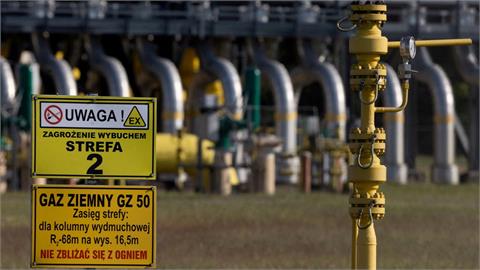The market capital of the international renewable energy companies have increased dramatically by overtaking the world's once energy giants as the financial markets started to see the risks associated with fossil fuels which trigger climate crisis in the world, Tim Buckley, director of energy finance studies at Institute for Energy Economics and Financial Analysis (IEEFA) told Anadolu Agency in an exclusive interview.
Excessive use of fossil fuels worldwide have led to rapidly soaring global warming. About 195 countries drafted Paris Climate Agreement in 2015 with the aim of limiting the global warming increase at 1.5°C.
A number of countries announced their plans to phase out fossil fuels starting with coal while the international financial institutions decided to stop coal financing. This decision is currently being reflected on oil and gas investments under the same concerns.
Renewables and clean energy technologies, on the other side, became more dominant in countries' energy mix and renewable energy companies are gaining more market value.
"I think, we had a major rethinking or reset in the financial energy markets with the COVID-19 by thinking about the future energy supplies and needs. This change became more obvious with the announcements of Chinese president about his country's commitment to net zero target before 2060 and Japan's by 2050," Buckley said.
China is currently the world's biggest carbon emitter.
Buckley explained that financial markets are responding to fossil fuels by regarding them as risk.
"Coal was getting rich a few year ago but now global capital is running for the door from it. The same momentum for oil and gas is gaining and COVID is catalyst for rethinking their risks," he said.
- Record capital value of renewable companies
Buckley stated that a growing number of major oil companies have started to transform their strategy to clean energy but some of them are only "talking the talk" as announcing a pivot is exceptionally different than delivering it.
By giving the example of Exxon Mobil, the world's biggest energy company 20 years ago, he said that its market capital is now around $140 billion as markets are absolutely pricing the climate crisis as stranded asset risk.
However, Tesla has around $400 billion market capital, three times bigger than the world's once energy giant, Buckley said.
The loss in market value of BP, Shell, Repsol and Eni is estimated to hit 60% this year since the demand for oil has dramatically declined due to the pandemic.
"In the last months, we see a new record in the market value of renewable energy companies while the value of oil companies have hit record low in a decade," he stated adding that falling costs of renewables will contribute to further growth of them.
- Solar costs to drop by 10% per annum
Buckley explained that solar energy is now among the lowest cost source of energy in an increasing number of countries around the world by replacing coal.
"What we are forecasting is that the cost of solar will continue to fall by 10% per annum for the next decade as we see a continued improvement in solid technologies and expansion in the scale of manufacturing," he said.
Buckley, pointing out to the solar potential radiation of Turkey, said: "Turkey without no doubt will see solar as the absolute least cost source of supply within next 5 years."
He said that solar could be a very significant part of the incremental energy demand growth in Turkey over the next 5 to 10 years as Turkey has the land, demand and opportunity to install higher capacity.
"I think, international investors could be encouraged by the government with a formal policy for further investment in Turkey," Buckley said.
- China's net zero commitment to increase solar capacity
He also explained that countries like Turkey, Australia, India, Chile, Brazil, Mexico and China have huge wind and solar resources.
"Solar is going to be a major benefit to very large parts of the market," Buckled said and added that with China's net zero commitment by 2060, the solar energy capacity will increase more rapidly.
Last year, an additional 115 gigawatts (GW) of solar capacity was installed across the world. The overall installed solar capacity reached 629 GW by the end of 2019, according to International Energy Agency.
China installed 30.1 GW of the new capacity last year while the US did 13.3 GW and Japan 7.7 GW.
(Anadolu Agency, October 30, 2020)



